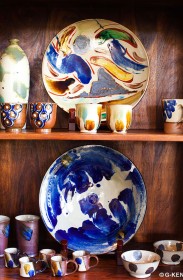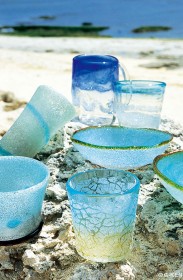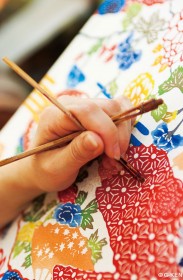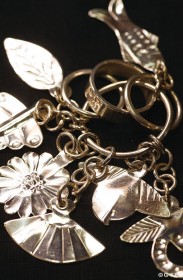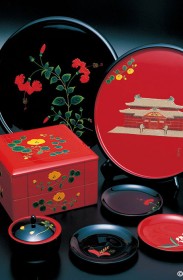>Pottery
The technique employed in creating yachimun (pottery in the Okinawan dialect) in the Ryukyus was imported from China around the middle of the 14th century and was later influenced by Japanese and Korean ceramics. Sturdy construction and distinctive hand-created designs are the unique characteristics of Okinawan pottery. Including plates, sake bottles, vases, flowerpots, incense burners, light shades and coffee cups, potters produce quality pieces by employing traditional methods and at the same time promote the development of new techniques. A number of young and innovative potters are actively participating in the art.
















